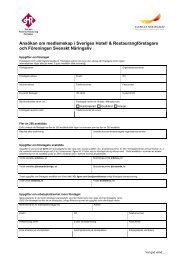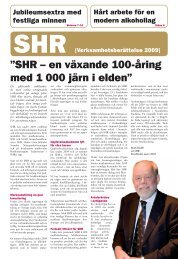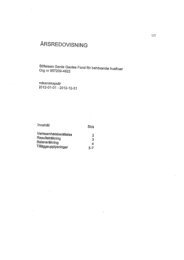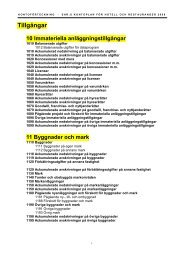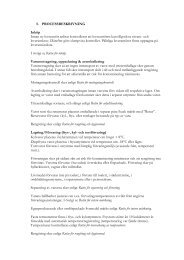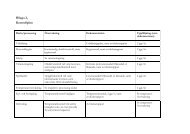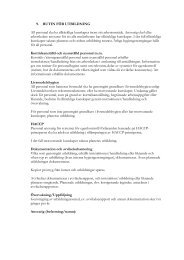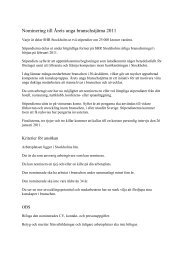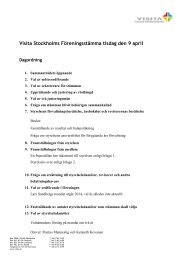A BOTTOM-UP APPROACH - Visita
A BOTTOM-UP APPROACH - Visita
A BOTTOM-UP APPROACH - Visita
Create successful ePaper yourself
Turn your PDF publications into a flip-book with our unique Google optimized e-Paper software.
BM boundary. Hence, according to the fundamental hypothesis, loadings of thegrowth calendar portfolio on the Growth and Value indices should be similar tothose of the value calendar portfolio. According to the label hypothesis, however,loadings of the growth calendar portfolio on the Growth index should be higher thanthat of the value calendar portfolio, simply because stocks in the growth calendarportfolio are labeled as Growth stocks. Similarly, the value calendar portfolio shouldload more heavily on the Value index. In summary, using the control sample I find nosignificant difference in index loadings across calendar portfolios. For the test sample,however, I find the loading of the growth calendar portfolio on the Growth index tobe significantly larger than that of the value calendar portfolio, and the loading ofthe value calendar portfolio on the Value index to be significantly larger than that ofthe growth calendar portfolio. These differences are not only significantly differentfrom zero but are also significantly different from the identical measures estimatedusing the control sample, again indicating the fundamental hypothesis should berejected in favor of the label hypothesis.I also ensure the results of Table II are not driven by nonsynchronous trading(Lo and MacKinlay (1990)) using three different methods. First, I create the resultsof Table II after removing stocks that tend to have stale closing prices. I use theTAQ database to determine the time of each closing price for each stock that switchesamong the S&P/Barra indices on each day. I remove a stock if more than five percentof its daily closing prices are recorded earlier than 3:45 PM during the pre-or postevent window for that stock. Second, I estimate average changes in comovementas in Table II using weekly rather than daily data. Third, I investigate changes inaverage comovement after including lagged index returns (four lags) in the regressiongiven in (1). For all three experiments, results are very similar to those in Table II.Moreover, the third experiment provides little evidence that cross-autocorrelationschange when a stocks switches to a new index.Finally, I estimate changes in univariate measures of comovement between indexswitchers and each index (correlation and univariate regression slope) and find similarresults as in Table II. When a stock switches to the Growth (Value) index, its correlationand slope coefficient with the Growth (Value) index significantly increases.15




